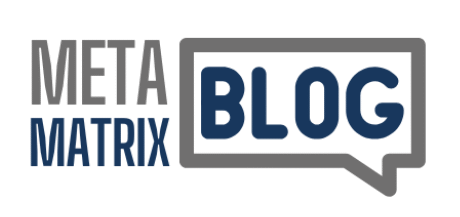
Screaming Frog SEO Guide

Screaming Frog SEO Guide – How to Use It for Better Rankings
Screaming Frog is one of the most powerful SEO tools available today. It helps you find website issues, improve rankings, and understand your site’s structure.
Whether you’re new to SEO or an experienced marketer, Screaming Frog can save you hours of work. In this guide, we’ll explore how to use it, what features it offers, and why it’s a must-have for website optimization.
1. What is Screaming Frog?
Screaming Frog is a website crawler. It scans your site like search engines do. It collects data about every page, link, and file.
This tool is available for Windows, macOS, and Linux. It has a free version and a paid version.
The free version lets you crawl up to 500 URLs. The paid version has no limit and includes advanced features.
2. Why Use Screaming Frog for SEO?
Screaming Frog helps you:
-
Find broken links
-
Detect missing meta descriptions or title tags
-
Identify duplicate content
-
Check redirects
-
Audit XML sitemaps
It’s like having a personal SEO assistant that never gets tired.
3. How Screaming Frog Works
When you start a crawl, Screaming Frog sends requests to your website’s server. It follows internal and external links. It collects data like:
-
Page titles
-
Meta descriptions
-
Headings (H1, H2, etc.)
-
Status codes (200, 301, 404, etc.)
-
Canonical tags
You can then filter, export, and analyze this data.
4. Installing Screaming Frog
-
Download the version for your operating system.
-
Install and open the application.
It works right out of the box, so you can start crawling immediately.
5. Screaming Frog Free vs Paid
Free version
-
Crawl up to 500 URLs
-
Basic SEO audit features
Paid version (£259/year)
-
Unlimited crawling
-
Google Analytics integration
-
Search Console integration
-
Custom extraction
-
JavaScript rendering
-
Scheduling and automated reports
If you have a large website or need detailed audits, the paid version is worth it.
6. Key Features of Screaming Frog
6.1 Find Broken Links
Broken links hurt SEO and user experience. Screaming Frog lists all 404 errors and the pages linking to them.
6.2 Audit Meta Tags
It shows missing, duplicate, or too-long meta titles and descriptions. This helps improve click-through rates.
6.3 Analyze Redirects
Check if your redirects are working and if there are redirect chains.
6.4 Check for Duplicate Content
Duplicate content can confuse search engines. Screaming Frog flags similar titles, descriptions, and content.
6.5 Create XML Sitemaps
Generate clean XML sitemaps for search engines.
6.6 Page Speed Insights
See how fast your pages load and identify performance issues.
7. How to Use Screaming Frog: Step-by-Step
Step 1: Enter Your Website URL
Type your domain into the search bar and click Start.
Step 2: Wait for Crawl to Finish
This may take a few minutes depending on your site size.
Step 3: Filter Results
Use the tabs like Internal, External, Response Codes, Page Titles, Meta Description, and H1.
Step 4: Export Data
You can export any report to Excel or CSV for further analysis.
Step 5: Fix Issues
Update broken links, optimize meta tags, and improve page speed.
8. Advanced Screaming Frog Tips
-
Use Custom Search to find specific words or code snippets.
-
Connect to Google Analytics to see traffic data alongside SEO metrics.
-
Schedule Crawls to run automatically and email you reports.
-
JavaScript Rendering to crawl sites built with frameworks like React or Angular.
9. Common Mistakes to Avoid
-
Crawling without setting the right user agent
-
Ignoring crawl settings for subdomains
-
Not using filters to focus on important data
-
Forgetting to compare before and after crawls
10. Benefits of Using Screaming Frog
-
Saves time on manual checks
-
Gives accurate technical SEO data
-
Works for small blogs and large e-commerce sites
-
Helps maintain SEO health over time
11. Alternatives to Screaming Frog
-
Sitebulb
-
Ahrefs Site Audit
-
SEMrush Site Audit
-
DeepCrawl
While these tools are great, Screaming Frog is unique for its speed, cost-effectiveness, and offline use.
12. Who Should Use Screaming Frog?
-
SEO agencies
-
Digital marketers
-
Bloggers
-
E-commerce owners
-
Web developers
If your website matters to you, Screaming Frog can help.
13. Best Practices for Screaming Frog SEO Audits
-
Run regular crawls monthly
-
Fix high-priority issues first
-
Keep backups of your reports
-
Compare crawls over time to track improvements
14. FAQs About Screaming Frog
Q1: Is Screaming Frog free?
Yes, but the free version has a 500 URL limit.
Q2: Can Screaming Frog crawl JavaScript websites?
Yes, in the paid version with JavaScript rendering enabled.
Q3: Does Screaming Frog work on Mac?
Yes, it supports Windows, macOS, and Linux.
Q4: How often should I run a Screaming Frog audit?
At least once a month, or before big website changes.
Q5: Can I use Screaming Frog for competitor analysis?
Yes, you can crawl competitor sites and analyze their structure.
Q6: Does Screaming Frog integrate with Google Search Console?
Yes, but only in the paid version.
15. Final Thoughts
Screaming Frog is an essential SEO tool for anyone serious about their website. It’s fast, reliable, and packed with features.
By running regular audits and fixing the issues it finds, you can improve your site’s visibility, user experience, and search rankings.

















